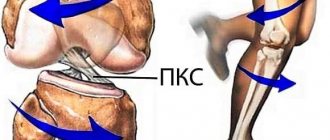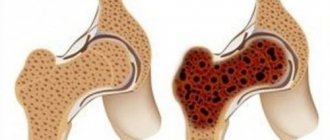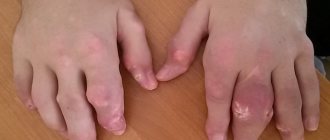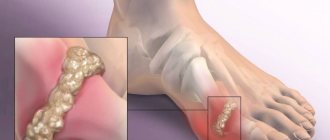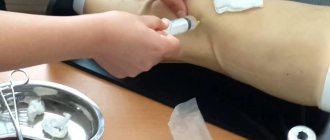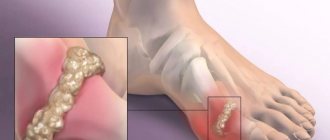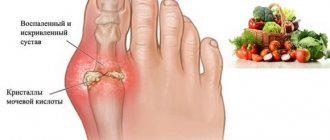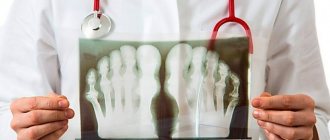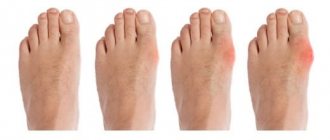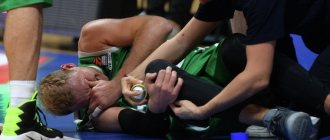Gout is often called the disease of kings; it has been known for a long time - it was described by Hippocrates. Today, gout, according to statistics, occurs in three people per thousand, and it mainly affects men. In fact, it is a joint disease.
How gout of the foot manifests itself, who is at risk and how the development of the disease can be prevented, Izabella Andreeva, a consultant at the School of Active Longevity and a doctor of functional diagnostics of the highest category ,
Pathogenesis of the disease
It is known that purine bases in the human body are broken down into uric acid and then excreted by the kidneys. When the concentration of uric acid in the blood exceeds, its crystals are deposited in the form of monosodium urate in the joints, kidneys, and soft tissues. As a result, arthritis occurs, formations appear on the flexor surfaces of the joints, ears (tophi), kidney damage develops in the form of urate nephropathy, and stones form in the kidneys.
Most often, men aged 30-60 years suffer from gout; in women, the disease develops less frequently, more often in the postmenopausal period.
Causes of gout
- Taking medications:
thiazide diuretics, aspirin (2 g per day), cyclosporines. - Diseases leading to the appearance of gout symptoms:
coronary heart disease (CHD), arterial hypertension, metabolic syndrome, chronic renal failure, psoriasis, some blood diseases. The development of gout can also be promoted by organ transplantation and the introduction of a contrast agent during X-ray examinations. - Abuse of foods rich in purine bases can provoke and aggravate the development of this disease:
fatty meats and fish, alcohol, carbonated drinks, legumes, eggs, chocolate, mushrooms.
Prognosis and prevention
If treatment is started in a timely manner and the patient complies with all medical prescriptions, the prognosis is favorable. It can be aggravated by factors such as late treatment, incorrect choice of medications, and the patient’s failure to comply with healthy eating rules. The greatest danger to the patient's life is complications from the kidneys.
As part of prevention, the following measures must be observed:
- avoid hypothermia;
- give up alcohol (especially beer and wine);
- follow diet No. 6 according to Pevzner;
- avoid nervous stress and physical overload;
- do not take thiazide and loop diuretics (if necessary, potassium-sparing diuretics are recommended);
- Avoid dehydration and drink at least 1.5 liters of water per day.
Signs and symptoms of gout
This is an acute attack of arthritis, usually of one joint, most often the first metatarsophalangeal, ankle or knee. Typically, an attack of arthritis develops in the early morning or at night, in the midst of complete health. It manifests itself in the form of severe pressing pain in one or another joint. The affected joint swells, the temperature in the joint area rises, the skin turns red and begins to become shiny. Usually the pain becomes less during the day, but by night it gets worse again. The duration of a gout attack lasts from two to three days to a week, sometimes more. With a repeated attack, other joints may be involved in such inflammation. With a long course of gout, tophi form on the flexor surfaces of the joints, which can open with the release of uric acid crystals. At this moment, the patient experiences quite intense pain.
Which doctor treats gout on the legs?
Having discovered manifestations of pathology, a person first goes to a therapist. In his office, an examination takes place, an anamnesis is collected and a primary diagnosis is made. Based on the test results, the patient is referred to a rheumatologist. But it is quite likely that it is necessary to consult with doctors of other specializations. For example, with:
- Cardiologist. Since the patient is prescribed diuretics and salt-removing drugs, the optimal one should be selected that would not harm the heart
- A surgeon who helps in very difficult cases
- Nutritionist. He gives advice on the diet required for this disease.
- An orthopedist is needed if the pathology has caused complications in the bones and muscles
- A urologist - to prescribe drugs that remove salts well, but do not harm the kidneys.
Criteria for the diagnosis of gout
| Criterion | Joint | Point |
| Clinical | ||
| Joint involvement during a typical gout attack | ankle/tarsus, 1st metatarsophalangeal joint | + 1 point + 2 points |
| Typical acute attack of gout | erythema over the surface of the joint (reported by the patient or recorded by the doctor), inability to touch or apply pressure to the area of the affected joint, significant difficulty walking or inability to perform. | one characteristic “+1 point” two characteristics “+2 points” three characteristics “+3 points” |
| Dynamics of a typical acute attack | The presence of 2 or more signs, regardless of anti-inflammatory therapy:
| one typical episode “+1 point” recurrent typical episodes “+2 points” |
| Clinical signs of tophi | Drained or plaster-like subcutaneous nodule, often vascularized, with typical localization: joints, ears, olecranon bursa, fingertips, tendons. | Presented "+4 points" |
| Laboratory methods | ||
| Uric acid level (determined during the period of time when the patient is not receiving drugs that reduce uric acid levels) | < 4 mg/dl (240 µmol/l) 6- 8- >10 mg/dl (> 600 µmol/l) | “- 4 points” “+2 points” “+3 points” “+4 points” |
| Synovial fluid analysis (polarization microscopy) | Negative result. | "-2 points" |
| Diagnostic Imaging Techniques | ||
| Signs of urate deposits | Ultrasonic “double-loop” phenomenon or signs of urate deposition when using the CT method with two radiation sources. | "+4 points" |
| Signs of gout-related joint damage | Detection of at least 1 erosion during radiography of the hands and/or feet. | "+4 points" |
Example of using diagnostic criteria:
- Attack of arthritis of the first metatarsophalangeal joint - +2 points
- Characteristics of the episode: erythema over the joint, inability to tolerate touch/pressure, great difficulty walking/inability to use the affected joint +3 points
- More than 1 “typical episode of arthritis” – +2 points
- Hyperuricemia (548 µmol/l) – +3 points
How to recognize?
“Gout attacks appear suddenly and mainly in the evening and at night. The main symptom is severe pain, pain increases rapidly over 8-12 hours, severe redness and swelling in the area of the affected joint. There may be chills and a rise in temperature,” says Isabella Andreeva.
You shouldn’t endure it and hope that it will go away on its own. The pain will not subside on its own, says the specialist. And without treatment, there is a high probability that the affected joints will collapse.
Article on the topic
Gout: causes, first signs and treatment
Treatment methods for gout
Treatment of gout consists of both pharmacological and non-pharmacological methods, and should take into account the following factors:
- uric acid concentration, number of previous arthritis attacks,
- stage of the disease (asymptomatic increase in uric acid, interictal period, acute or intermittent arthritis, chronic tophi gout,
- age, gender, obesity, hyperuricemic drugs, polypharmacy.
It should be remembered that asymptomatic hyperuricemia does not equate to gout. Currently, there is no data proving the need for drug therapy to maintain normouricemia in such patients; the main method of therapy in this case is the treatment of comorbid diseases, dietary correction and lifestyle modification.
In the treatment of gout, a combination of non-pharmacological and pharmacological treatments is more effective than monotherapy. When treating, it is necessary to take into account the phase of the disease: acute attack of arthritis, inter-attack period, chronic form, tophi form, serum uric acid concentration, number of arthritis attacks, the presence of comorbid conditions such as diabetes mellitus (DM), arterial hypertension, coronary artery disease, and risk factors for hyperuricemia.
The main aspect of therapy is teaching the patient a healthy lifestyle, weight loss, diet, and reducing alcohol intake, especially beer. Dietary restriction of purine-rich animal products and weight loss help reduce serum uric acid levels.
One of the mandatory conditions for the treatment of gout is the control of comorbid diseases - dyslipidemia, alternative hypertension, diabetes mellitus, as well as weight loss and smoking cessation.
Treatment of an acute attack of gouty arthritis
Nonsteroidal anti-inflammatory drugs (NSAIDs) and colchicine (when taken orally) are used to treat an acute attack of gout. One effective treatment is removal of synovial fluid and intra-articular injection of long-acting steroids. This treatment method is effective and safe.
Risk group
Despite the fact that the disease is much less common today, there is a certain risk group that is most likely to be affected by it. It includes:
- alcohol abusers;
- having no moderation in food, especially if it is potentially harmful and unhealthy;
- those suffering from excess body weight;
- people with chronic kidney and liver diseases;
- those who have joint deformities;
- people suffering from circulatory disorders.
First of all, they need to review their eating habits and engage in disease prevention. “I would especially like to note the presence of deformation of the joint of the big toe. That’s why it’s so important to prevent flat feet due to gout,” says the functional diagnostics doctor.
Question answer
How to relieve pain if gout occurs?
Recommendations for antihyperuricemic therapy
The goal of antihyperuricemic therapy is to prevent the formation and dissolution of existing monosodium urate crystals by maintaining uric acid (UA) levels below 360 µmol/L.
- Allopurinol
– promotes adequate long-term antihyperuricemic therapy. The drug is recommended at a dose of 100 mg daily, if necessary, the dose is increased by 100 mg every two to four weeks. Patients with renal failure require dose adjustment of this drug.
- Uricosuric agents
(probenecid, sulfinpyrazone) are used as an alternative to allopurinol in patients with normal renal function. These drugs are relatively contraindicated in patients with urolithiasis.
- Benzbromarone
- powerful uricozourik; the drug is more effective than allopurinol. It is used for moderately reduced renal function, but requires monitoring due to hepatotoxicity.
- Colchicine
can be used as a prophylaxis for joint attacks during the first month of antihyperuricemic therapy (0.5-1.0 grams per day) and/or NSAIDs.
It is worth noting that in patients with gout, diuretics should be discontinued if possible (except for cases where diuretics are prescribed for health reasons).
- Losartan and fenofibrate
have a moderate uricosuric effect. These drugs are recommended for use in patients who are resistant to or intolerant of allopurinol or other uricosurics, in the presence of hypertension or metabolic syndrome. However, the clinical significance of such therapy and its cost-effectiveness are still unknown.
At the Clinic of High Medical Technologies named after. N.I. Pirogov patients will be able to determine the serum level of uric acid and other important biochemical blood parameters, as well as undergo clinical blood and urine tests, and receive qualified advice from a rheumatologist on treatment both during the interictal period of the disease and during the attack of an acute gouty arthritis.
Classification and stages of development
There are several criteria for the classification of gout, which include the causes of occurrence (etiology), severity and the number of affected joints [2].
By etiology:
1. Primary. Caused by metabolic and excretory disorders of the kidneys, as well as congenital enzymopathies.
2. Secondary. It occurs as a consequence of diseases accompanied by increased synthesis of uric acid (obesity, psoriasis, malignant tumors, hypothyroidism, blood diseases). It can also appear due to poisoning and taking certain medications (for example, diuretics or acetylsalicylic acid).
By severity:
1. Attacks of joint pain occur no more than 2 times a year, and no more than 2 joints are involved in the inflammatory process. In the mild form, the kidneys and joints are not affected, and tophi are absent or their diameter does not exceed 1 cm.
2. Attacks occur 3-5 times a year. Up to 4 joints are affected, and the inflammatory process is accompanied by their moderate destruction. Multiple small tophi, urolithiasis.
3. Heavy. Attacks occur more often than 5 times a year; many joints of the upper and lower extremities are involved in the inflammatory process. Multiple large tophi, severe lesions of the osteoarticular apparatus, nephropathy.
According to clinical forms:
1. Articular (only joints are affected).
2. Visceral (urates are deposited in the kidneys, liver and other internal organs).
3. Viscero-articular (urates are deposited both in the joints and in the internal organs).
Gout has several stages of development:
1. Asymptomatic hyperuricemia (latent or premorbid stage).
2. Acute gouty arthritis (initial stage).
3. Interictal period.
4. Chronic gouty arthritis.
5. Chronic tophi gout.
Sometimes in clinical practice, gout is classified based on the number of joints involved in the pathological process. There are such forms as monoarthritis (one joint is affected), oligoarthritis (up to 3 joints) and polyarthritis (more than 3 joints).
